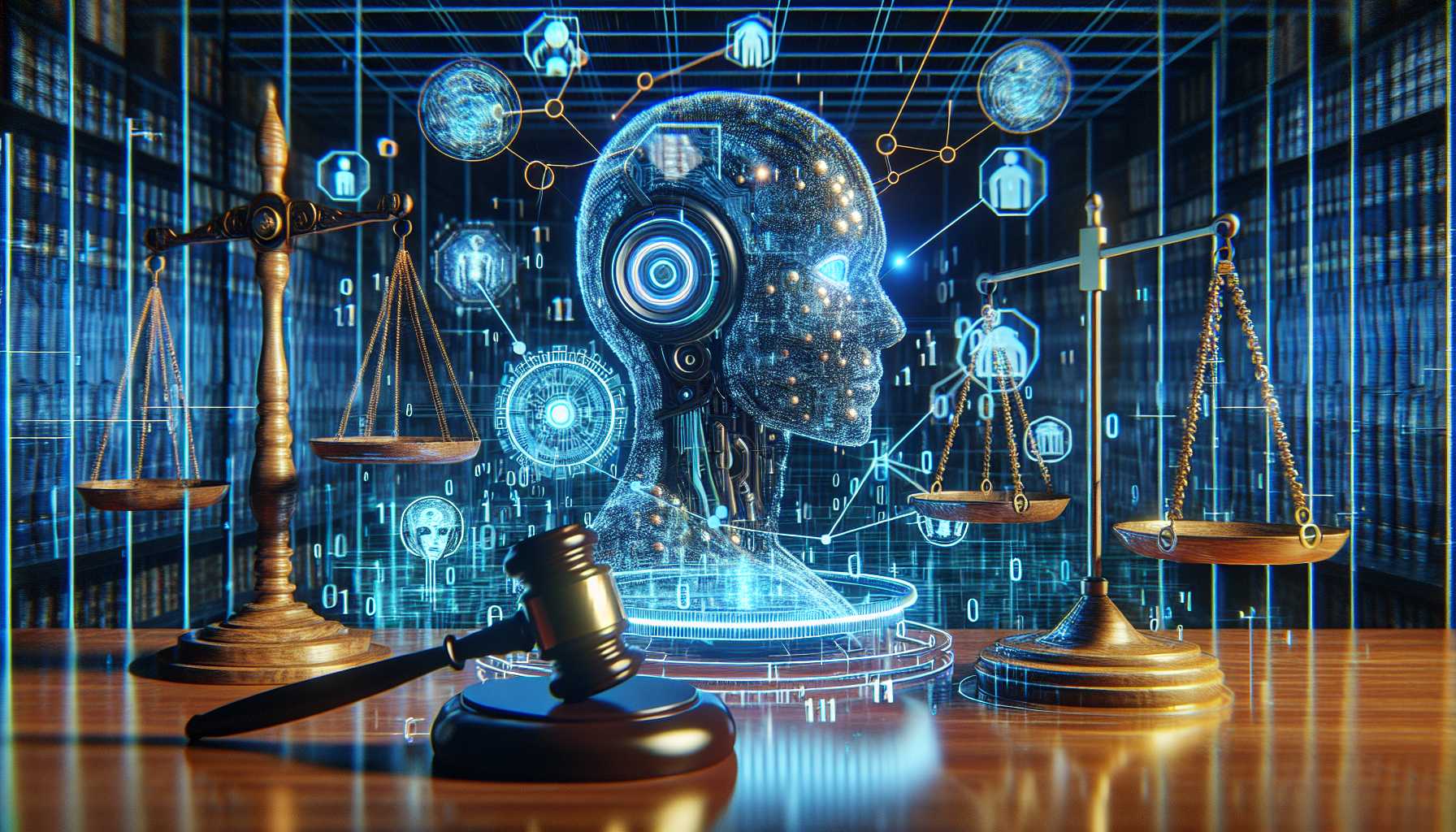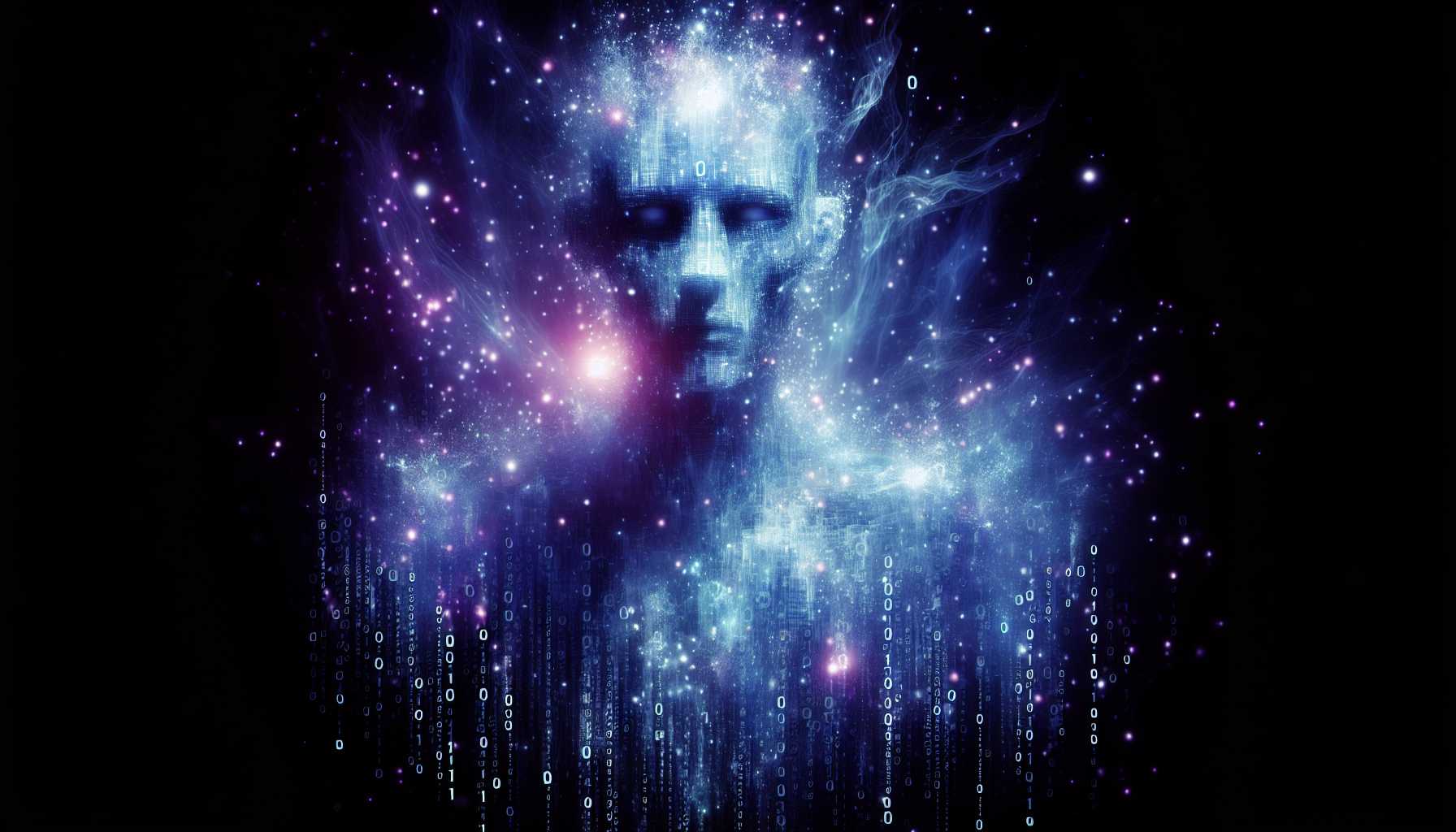Dissecting a Spectral Performance: The George Carlin AI Comedy Special Controversy
 In the bustling circuitry of today’s rapid-fire tech developments, we’ve stumbled onto a legal brouhaha that makes us question the very essence of creativity and legacy. Picture this: a beloved, late comedic genius ‘returns’ from beyond to deliver laughter once more, but without his conscious will or, crucially, his estate’s approval. George Carlin’s estate has slammed a federal courthouse door on Dudesy, a media entity that’s conjured an artificial phantom hour of what might best be described as a spectral ‘comedy special.’ The lawsuit alleges that this ethereal humor stitchery is Copyright Infringement in the Neon Light District of AI advancements. While Dudesy bandied about the AI tool as a “next paintbrush,” Carlin’s kin and admirers saw through the misty display to the desecration it may well represent. As a tech investor, it strikes a chord with the often-ignored conversation on ethical innovation. AI stands at the precipice of greatness and catastrophe, and it is examples like these that warn us to tread lightly lest we trample the very humanity we seek to serve.
In the bustling circuitry of today’s rapid-fire tech developments, we’ve stumbled onto a legal brouhaha that makes us question the very essence of creativity and legacy. Picture this: a beloved, late comedic genius ‘returns’ from beyond to deliver laughter once more, but without his conscious will or, crucially, his estate’s approval. George Carlin’s estate has slammed a federal courthouse door on Dudesy, a media entity that’s conjured an artificial phantom hour of what might best be described as a spectral ‘comedy special.’ The lawsuit alleges that this ethereal humor stitchery is Copyright Infringement in the Neon Light District of AI advancements. While Dudesy bandied about the AI tool as a “next paintbrush,” Carlin’s kin and admirers saw through the misty display to the desecration it may well represent. As a tech investor, it strikes a chord with the often-ignored conversation on ethical innovation. AI stands at the precipice of greatness and catastrophe, and it is examples like these that warn us to tread lightly lest we trample the very humanity we seek to serve.
Swifties Disarming the Deepfake Barrage: An Online Fandom’s Crusade Against AI Abuse
 Taylor Swift’s legion, adeptly christened ‘Swifties,’ have taken on possibly their most somber crusade to date. Tackling an outbreak of nonconsensual deepfake pornography spiraling across platforms like wildfire, these proponents of decency have reconstructed the battlefield to their advantage. What they’ve accomplished isn’t just a testament to their dedication; it’s a paradigm-shifting demonstration of fan power in the digital age. Here’s the unsettling truth: 96% of deepfakes are pornographic, an AI-manifested hammer blow chiefly against women’s dignity. The conspicuous reality of such malefic data raises every kind of red flag about AI’s murky waters. The platforms that are arenas for these deepfakes, like X and Telegram, showcase the dire need for robust AI policies and bespoke detection tools. This whole debacle isn’t a mere celebrity skirmish; it’s an echo of a broader, more pervasive threat – one where AI can morph into an unconsenting individual’s cruel puppeteer.
Taylor Swift’s legion, adeptly christened ‘Swifties,’ have taken on possibly their most somber crusade to date. Tackling an outbreak of nonconsensual deepfake pornography spiraling across platforms like wildfire, these proponents of decency have reconstructed the battlefield to their advantage. What they’ve accomplished isn’t just a testament to their dedication; it’s a paradigm-shifting demonstration of fan power in the digital age. Here’s the unsettling truth: 96% of deepfakes are pornographic, an AI-manifested hammer blow chiefly against women’s dignity. The conspicuous reality of such malefic data raises every kind of red flag about AI’s murky waters. The platforms that are arenas for these deepfakes, like X and Telegram, showcase the dire need for robust AI policies and bespoke detection tools. This whole debacle isn’t a mere celebrity skirmish; it’s an echo of a broader, more pervasive threat – one where AI can morph into an unconsenting individual’s cruel puppeteer.
Resurrecting Comedians and Consoling Hearts: The Bleak Yet Hopeful World of AI-Recreated Personalities
 Peek through the keyhole of innovation and you’ll see AI’s latest parlor trick: bringing the deceased back for one more conversation. Eerily enchanting or deeply disturbing? The story of Christi Angel and Joshua Barbeau with Project December prompts a profound philosophical quiver. Where’s the line in the silicon sands between tribute and trespass? The AI-generated afterlife, a term I never thought I’d coin, is no Black Mirror fiction; it’s as real as any tech around us. Yet, films like ‘Eternal You’ implore us to wield this technology with wary reverence, for it’s a razor-edged tool that could just as easily mangle the grieving process it purports to mend. The psychology of human-computer interactions teeters on a precarious ledge, and these AI services dance perilously close to the void.
Peek through the keyhole of innovation and you’ll see AI’s latest parlor trick: bringing the deceased back for one more conversation. Eerily enchanting or deeply disturbing? The story of Christi Angel and Joshua Barbeau with Project December prompts a profound philosophical quiver. Where’s the line in the silicon sands between tribute and trespass? The AI-generated afterlife, a term I never thought I’d coin, is no Black Mirror fiction; it’s as real as any tech around us. Yet, films like ‘Eternal You’ implore us to wield this technology with wary reverence, for it’s a razor-edged tool that could just as easily mangle the grieving process it purports to mend. The psychology of human-computer interactions teeters on a precarious ledge, and these AI services dance perilously close to the void.
The Robin Hoods of Pharma: Could AI Saviors Rebalance Drug Development’s Scale?
 Speaking of nobility in AI, let’s not shadow its potential as a life-saving crusader. The drug discovery terrain is on the brink of revolution, courtesy of AI’s meticulous miners at work. The allure here isn’t just the billions saved in what’s conventionally a financial sinkhole – it’s the democratization of medicine discovery that could turn pharmaceutical David-and-Goliath tales on their heads. Benevolent and Recursion, AI alchemists, may be inching towards a future where neglected diseases receive their due spotlight, not by virtue of profitability, but of possibility and need. This is the AI promise I’ve invested in – the one that elevates humanity’s inherent value over the bottom line.
Speaking of nobility in AI, let’s not shadow its potential as a life-saving crusader. The drug discovery terrain is on the brink of revolution, courtesy of AI’s meticulous miners at work. The allure here isn’t just the billions saved in what’s conventionally a financial sinkhole – it’s the democratization of medicine discovery that could turn pharmaceutical David-and-Goliath tales on their heads. Benevolent and Recursion, AI alchemists, may be inching towards a future where neglected diseases receive their due spotlight, not by virtue of profitability, but of possibility and need. This is the AI promise I’ve invested in – the one that elevates humanity’s inherent value over the bottom line.
The Unsettling Reality of AI-Generated Explicit Content and the Swift Swiftian Response
 Returning to a graver note, the narrative once again swings back to the misuse of AI in spawning explicit imagery. The opposition to this practice extends beyond fandoms to lawmakers, navigating through the labyrinth of ensuring innovation without infringement, creativity without crime. The struggle with AI’s dual edge – its wondrous ability to create juxtaposed with the ease in which it can perpetrate harm – is encapsulated conspicuously in the plight of Taylor Swift and her fans’ impavid defense. This instance isn’t just a footnote in the AI governance saga but a clarion call to the industry at large. It urges a more liminal space where AI tools and ethics converge, ensuring boundaries endure steadfast against the tides of unchecked technological freedom. This is where we stand, readers. On the bleeding edge of technological renaissance, our once-clear reflections now distorted in an AI-crafted looking glass where creativity meets controversy, and potentially, legal repercussion awaits innovation’s overzealous stride.
Returning to a graver note, the narrative once again swings back to the misuse of AI in spawning explicit imagery. The opposition to this practice extends beyond fandoms to lawmakers, navigating through the labyrinth of ensuring innovation without infringement, creativity without crime. The struggle with AI’s dual edge – its wondrous ability to create juxtaposed with the ease in which it can perpetrate harm – is encapsulated conspicuously in the plight of Taylor Swift and her fans’ impavid defense. This instance isn’t just a footnote in the AI governance saga but a clarion call to the industry at large. It urges a more liminal space where AI tools and ethics converge, ensuring boundaries endure steadfast against the tides of unchecked technological freedom. This is where we stand, readers. On the bleeding edge of technological renaissance, our once-clear reflections now distorted in an AI-crafted looking glass where creativity meets controversy, and potentially, legal repercussion awaits innovation’s overzealous stride.





